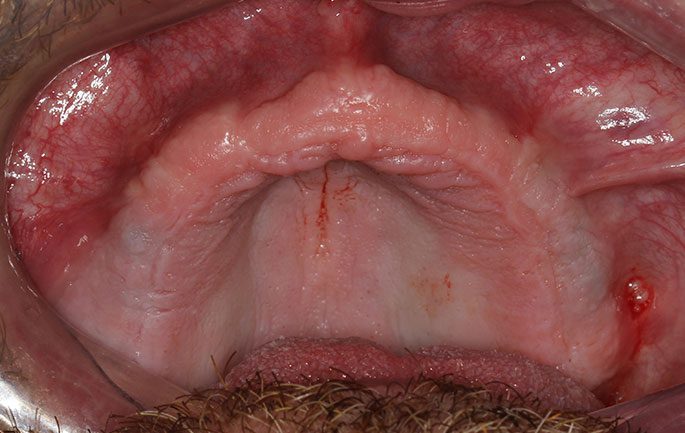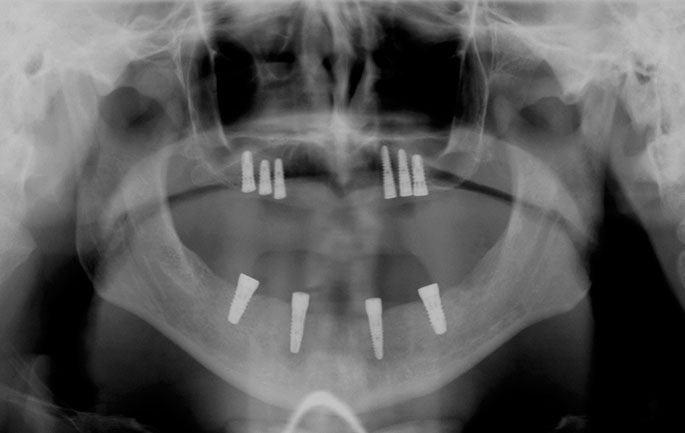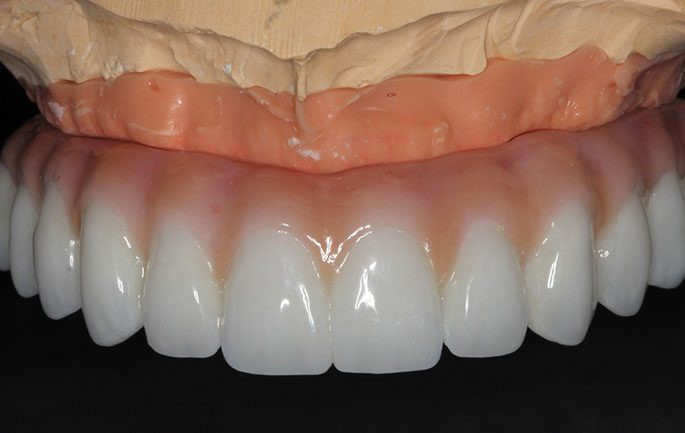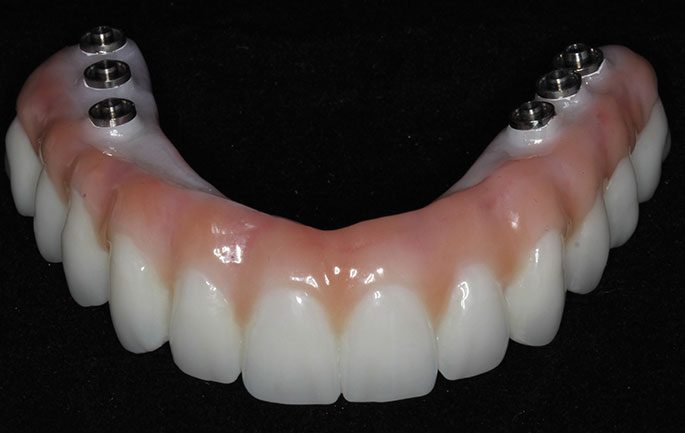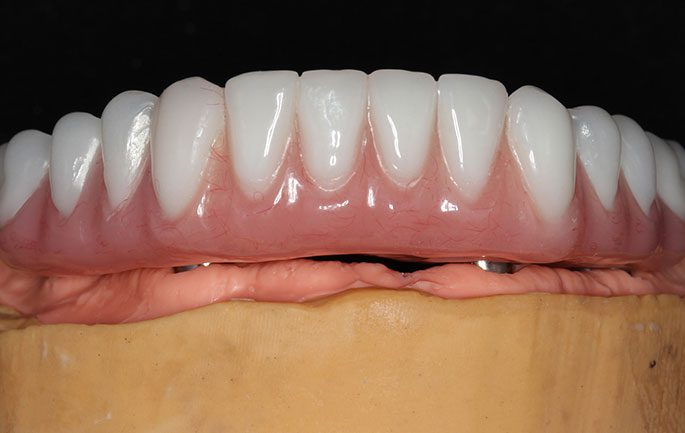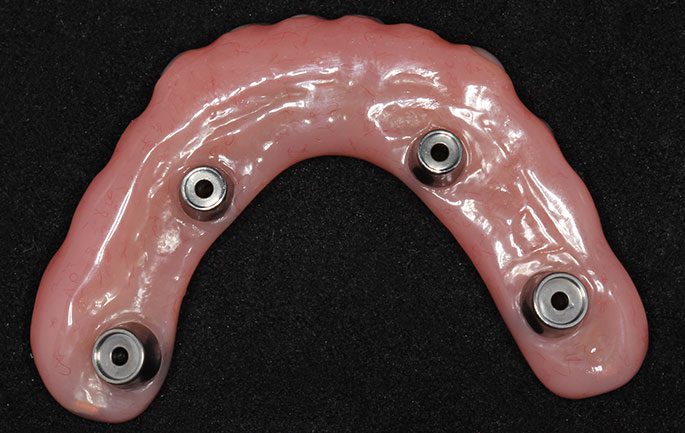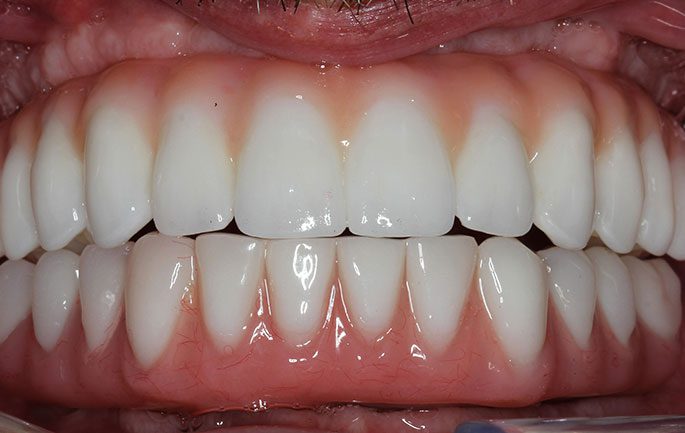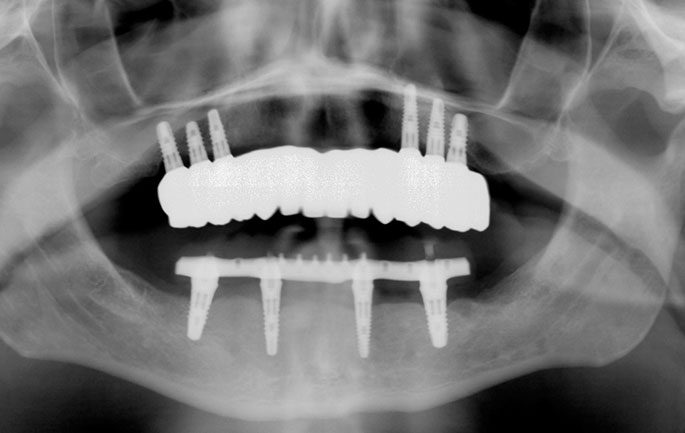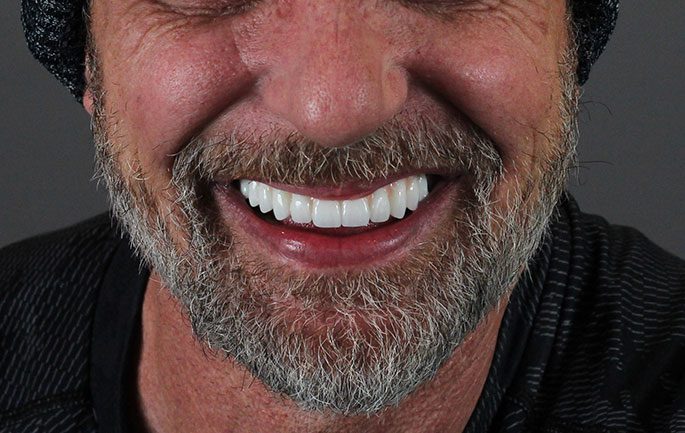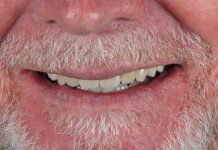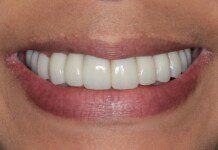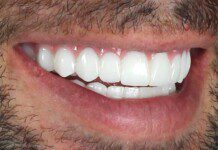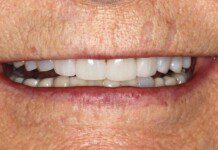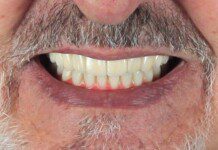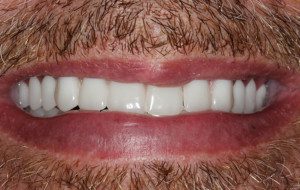
1 of 24
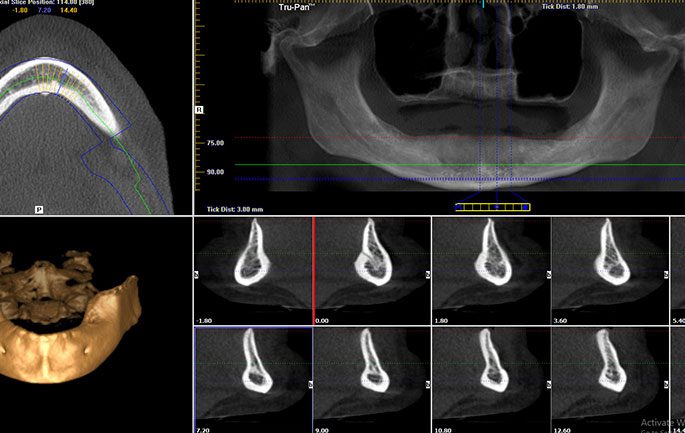
CT Scan of mouth. Lower jaw has moderate to severe bone resorption (bone loss). However, implants are possible.
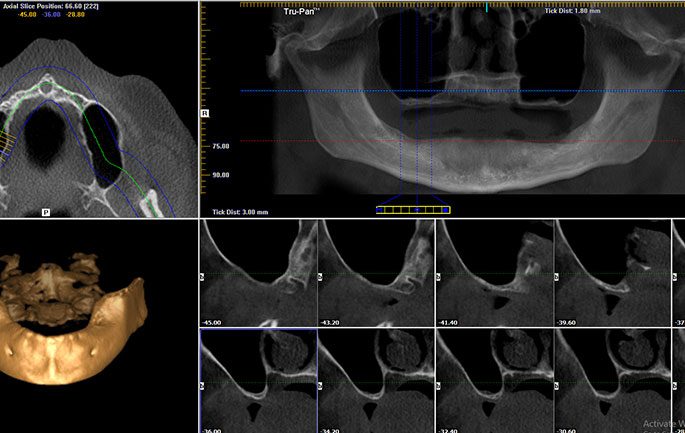
CT Scan (3d x-ray) of mouth. Upper arch has zero bone for implants. Bone grafting in the form of sinus bone grafting is necessary for implants to be placed in the future.
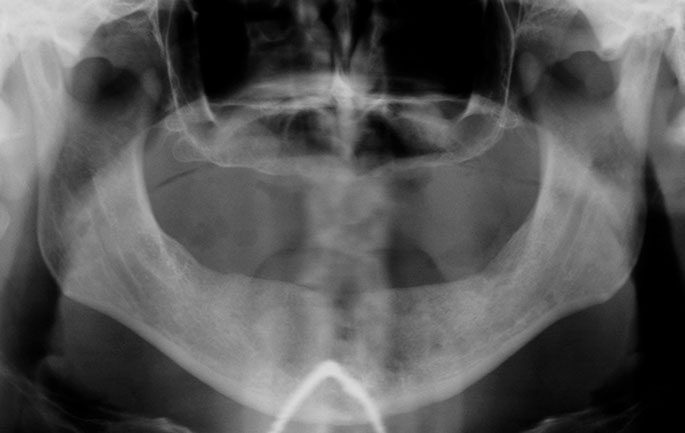
Panoramic x-ray of mouth showing a 2-dimensional view of bone. The strange bright loop in the lower is a metal necklace that is superimposed on the image.
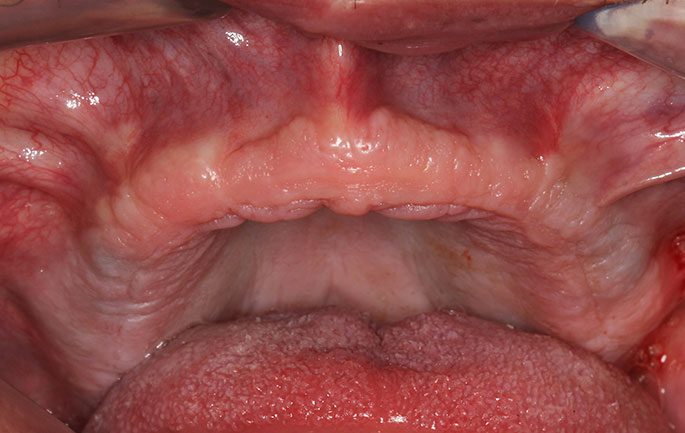
No teeth in the upper arch. This is actually 6 months after bone grafting and 3 months after implant placement. If you look closely, you can see the dark areas under the gums where the implants were placed and covered by tissue. Occasionally, when the bone density is poor or the gum tissues are of poor quality we suture the gum tissues to over the implants. They are then uncovered 2-3 months later. This technique greatly improves tissue quality.
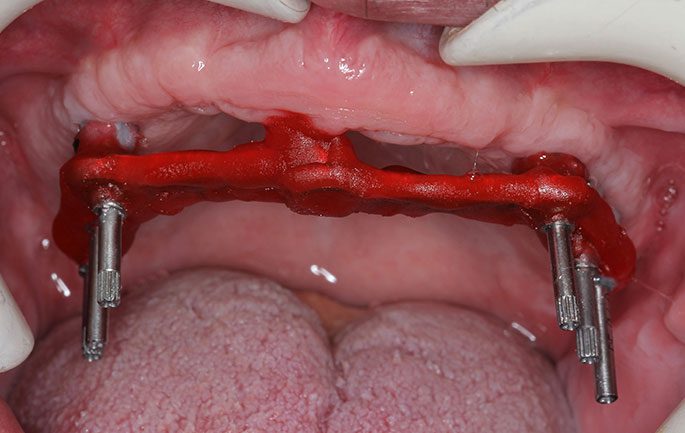
Specialize, custom impression jigs are then fabricated and transferred to the upper implants. Each part is connected in the mouth for maximum accuracy.
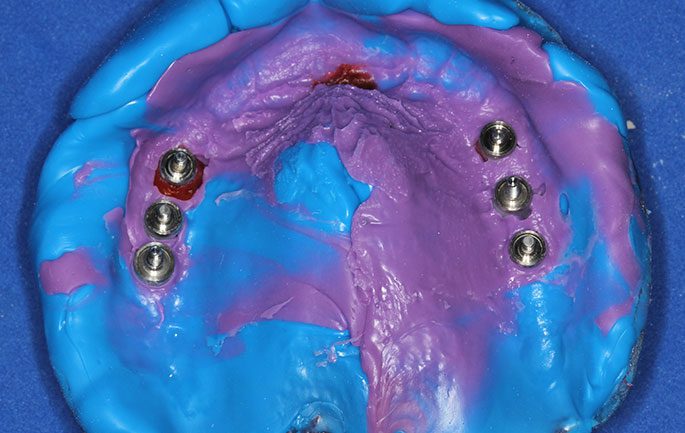
An impression of the impression assembly and the soft tissues is made with a material called, poly-vinyl-siloxane. It is very accurate.
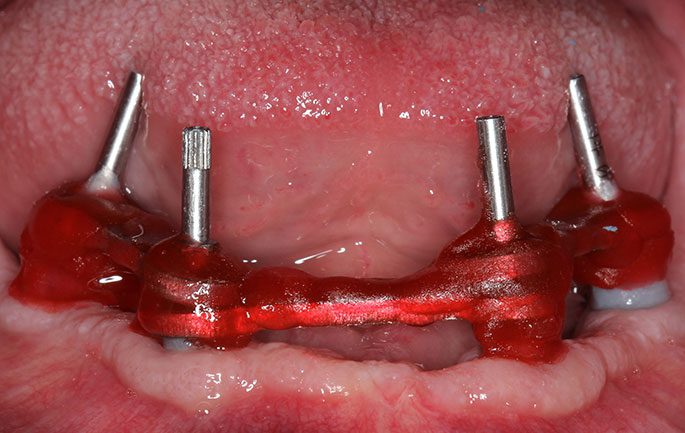
Specialize, custom impression jigs are then fabricated and transferred to the lower implants. Each part is connected in the mouth for maximum accuracy.
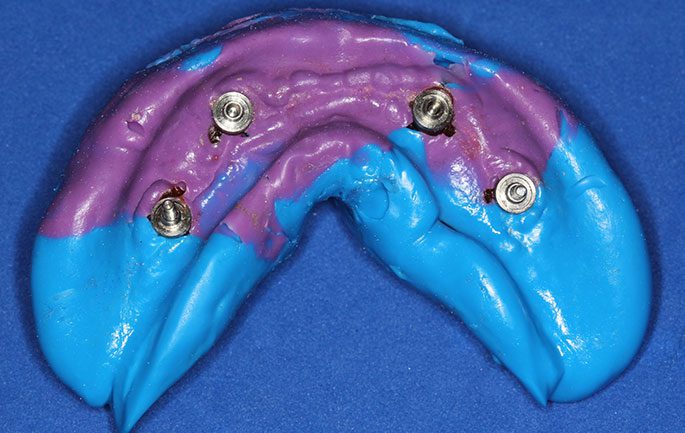
An impression of the impression assembly and the soft tissues is made with a material called, poly-vinyl-siloxane. It is very accurate.
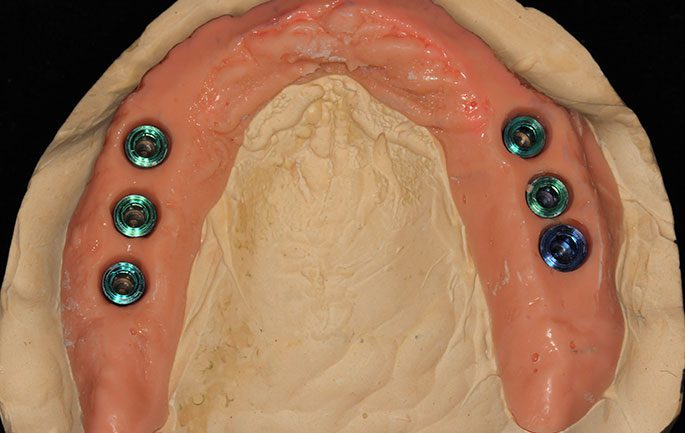
From those impressions an upper “Master Cast” is fabricated in an accurate dental stone. The master cast is also very accurate. It will serve as the foundation for the final restorations.
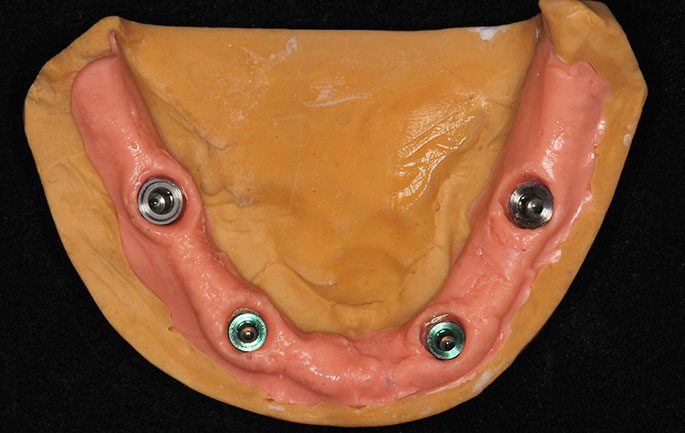
From those impressions a lower “Master Cast” is fabricated in an accurate dental stone. The master cast is also very accurate. It will serve as the foundation for the final restorations.
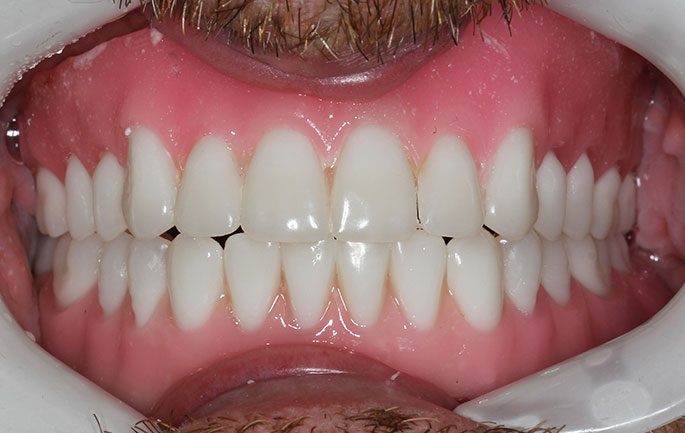
Lips retracted, close-up view. Trial dentures are then fabricated in the laboratory and tried in the mouth to establish all the important criteria for the final restorations, such as: tooth display, smile, tooth size, tooth shape, lip fullness, bite, etc.
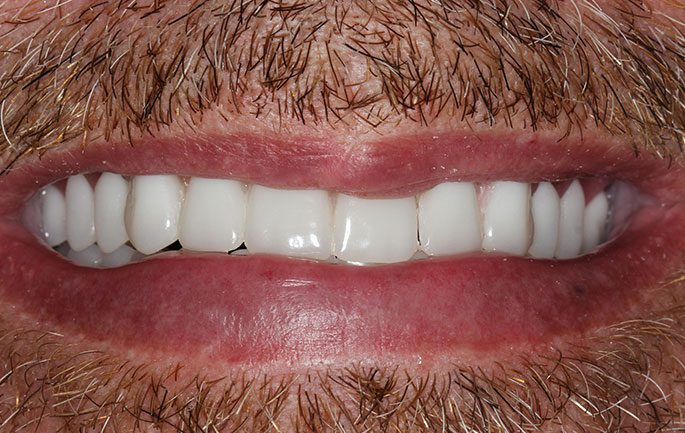
Smile only view. Trial dentures are then fabricated in the laboratory and tried in the mouth to establish all the important criteria for the final restorations, such as: tooth display, smile, tooth size, tooth shape, lip fullness, bite, etc.
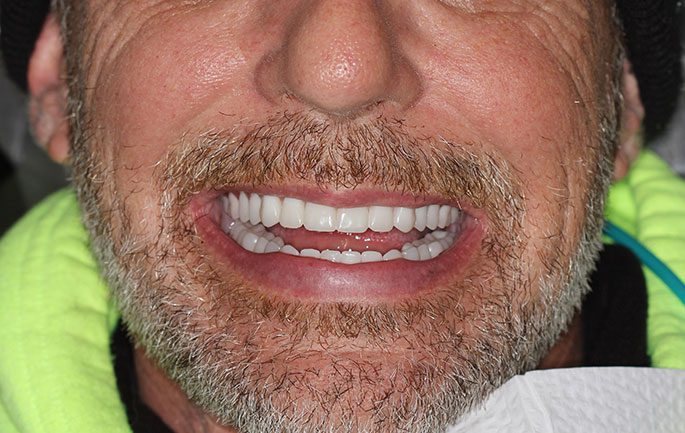
Full face smile. Trial dentures are then fabricated in the laboratory and tried in the mouth to establish all the important criteria for the final restorations, such as: tooth display, smile, tooth size, tooth shape, lip fullness, bite, etc.
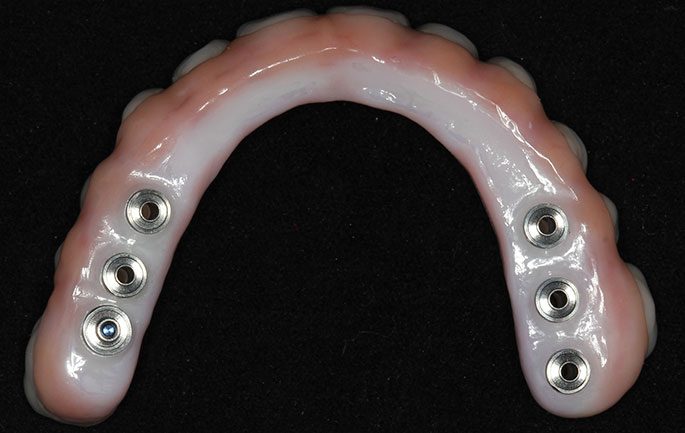
Full Zirconia Bridge, tissue view. The silver platforms are the titanium engagements called abutments. When perfect impressions are completed and perfect lab fabrication ensues the result is a perfect fitting prosthesis. These abutments sit on the implants and the retention screws are tightened under “zero tension”. This level of precision gives the best possible chance for long-term success.
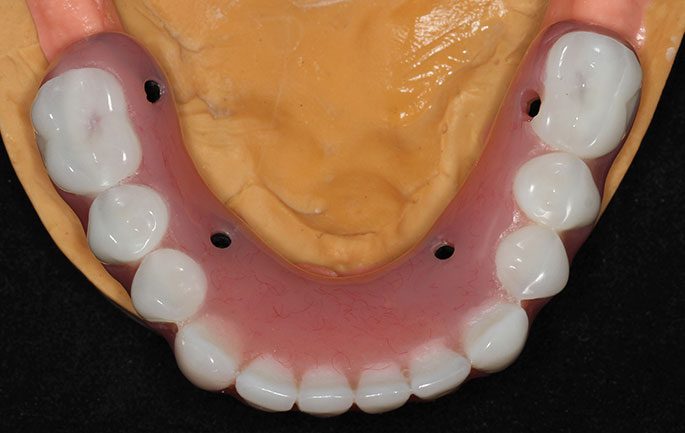
Lower titanium/acrylic hybrid (All-on-4) prosthesis on stone model. At the Dental Implant Center we rarely do both jaws in the same material (Zirconia-Zirconia or Titanium/acrylic- Titanium/acrylic) because these materials are not biocompatible when used to together and the incidence of breakage is exponentially higher.

